We all know that the skin peels after a sunburn. It’s a frustrating result of staying out in the sun for a bit too long. You may have a sunburn now and are wanting it to go away as soon as possible.
So, how long does the skin peel after a sunburn? The skin will peel for about 3 to 7 days after getting sunburned. The skin peels after a sunburn to get rid of damaged skin cells. Once the skin is fully healed, the peeling will stop.
Read on to learn more about how long the skin peels after a sunburn and how to shorten this time.
Also, for an excellent moisturizer, take a look at our top pick, the Malin + Goetz Vitamin E Face Moisturizer:
Click here to see it on Amazon.
Why Does My Skin Peel After a Sunburn?
The amount of time you can spend under the sun will depend on your skin type. Compared to people with fair skin, dark-skinned people have more superior sun protection because their skin is naturally rich in melanin (more on this later).
For a moderate UV index reading of 6 or 7, the maximum unprotected sun exposure is around 30 to 45 minutes. At this level, you should seek shade between 10 a.m and 4 p.m.
Once your body senses that your skin is getting damaged by UV rays, it tells your melanocytes to produce a pigment called melanin. This pigment protects your skin from further skin damage by absorbing ultraviolet radiation and then dispels it as heat.
However, when this natural defense mechanism gets overwhelmed, it results in sunburn.
The severity of your sunburn depends on different factors, which include:
- The intensity of UV radiation in the sunlight
- The duration of sun exposure without protection
- Your location
- Your skin type (which is determined by heredity)
It doesn’t necessarily mean that you’re more protected from getting sunburned because you have a darker complexion or uses sunblock creams and the like. You’re still vulnerable to the harmful effects of UV radiation if you’re out long enough.
So, why does your skin peel after a sunburn? Human skin cells die and slough off all the time without you noticing it. However, this process speeds up when you get a sunburn, which in turn leads to visible skin peeling.
How Long Does the Skin Peel After a Sunburn?
How long does the skin peel after a sunburn? After you get a sunburn, your skin will peel for about 3 to 7 days. The amount of time for it to peel depends on the severity of the sunburn and the skin care routine you follow.
You can reduce the time it takes for the peeling to stop by following the tips I’ll discuss in the next section.
Once the skin is fully healed from the burn, the peeling will stop. The peeling is a natural process that everyone experiences after a sunburn, just at different degrees of severity.
After just 2 or 3 days, you’ll start to notice signs and symptoms of a sunburn. Skin peeling means that you’re suffering from mild to moderate sunburn. Other signs and symptoms of sunburn include:
- Pinkness or redness (affects only the outermost layer of the skin)
- Warm and painful skin
- Itching
- Swelling
- Tiny blisters that are filled with fluid
Tips to Prevent Skin from Peeling After a Sunburn

As mentioned earlier, the skin normally peels for about 3 to 7 days after getting sunburnt. This amount of time can be reduced by taking extra care ad following the below tips.
Tip #1: Don’t Go Out in the Sun Again
When people see their skin turning a bit red, they think it’s still okay to go back out there (in the sun). Perhaps you have done this yourself?
Skin redness isn’t the early symptom of sunburn. It’s already a sign that your body is trying to repair the sun-damaged area of your skin by directing blood towards it.
So, learn to listen to your skin. Avoid going out in the sun again when you see the first visible sign of sunburn.
Tip #2: Gently Clean the Affected Areas
Before cleaning your sunburned skin, you might want to take an over-the-counter painkiller to help with the pain and inflammation. You can try ibuprofen, naproxen, and other nonsteroidal anti-inflammatory drugs (NSAIDs). But please, consult your doctor first.
The next step is to dissipate heat from your skin. You can take a cool shower or bath and then remove dirt and sunscreen residue using a gentle body wash with anti-inflammatory properties.
Try to shower under two minutes, or if you’re taking a bath, 15 to 30 minutes. Bathing or showering for too long will leave your skin dry, which will make your sunburn worse.
Right after taking a shower, apply something cool directly on the affected areas. Don’t put ice directly on your skin because it could cause an ice burn. Instead, use a cloth-covered ice pack or a cool, wet towel.
Dr. Joshua Zeichner, a New York-based dermatologist, recommended using cold milk compress to soothe a painful sunburn. Milk is rich in amino acids, fats, lactic acid, proteins (whey and casein), vitamin A, and vitamin D.
How are these acids and vitamins going to help? Lactic acid promotes skin renewal, while vitamins help your skin to heal. There would also be less inflammation because your immune system isn’t working too hard to repair your sun-damaged skin.
Tip #3: Use Natural Home Remedies
Skin peeling after a sunburn is natural and harmless. It’s your skin’s way of repairing itself. However, it can be itchy, uncomfortable, and unsightly.
For this reason, you can take OTC medications along with applying natural home remedies to help control the symptoms as you wait for your sunburned skin to completely heal.
How to Lessen the Time It Takes for the Skin Peeling to Stop
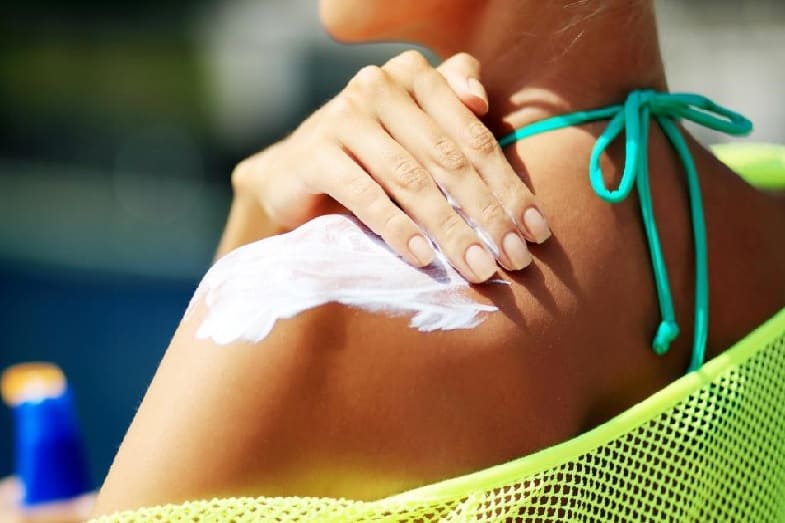
There are a few ways to improve your skin after a sunburn and reduce the time it spends peeling. Most sunburns will leave the skin peeling for about a week. You can reduce this time by following the below tips.
1. Keep Your Skin Moisturized Throughout the Day
Moisturize your skin right away to stop flaking and peeling. Go for a thicker moisturizer that contains nourishing and healing ingredients, such as antioxidants (vitamins C and E) and ceramides, which help restore moisture, protect your skin from harsh environmental elements, and strengthen your skin’s barrier.
The American Academy of Dermatology states not to use products that contain benzocaine, petroleum, and lidocaine. Benzocaine and lidocaine can further irritate your skin. Petroleum will prevent heat from escaping your skin. It also causes pain and itching to become worse.
Here are three of the best moisturizing products that can help soothe and hydrate sensitive and sun-damaged skin:
- Malin + Goetz Vitamin E Face Moisturizer – Are you looking for a fragrance-free and non-greasy moisturizer? If yes, the Malin + Goetz Vitamin E Face Moisturizer is a great option for you.
Click here to see it on Amazon.
This moisturizer is hydrating, but it doesn’t leave a greasy feeling on your face or clog your skin’s pores. The main ingredients responsible for its hydrating and soothing effects are fatty acids, vitamin E, vitamin B5, and chamomile.
2. ELEMIS S.O.S Emergency Cream – The ELEMIS S.O.S Emergency Cream is specially formulated to provide more intensive hydration that leaves your skin smooth and flawless.
Click here to see it on Amazon.
It contains lavender absolute, myrrh essential oil, willow, and Gotu kola (Centella asiatica).
These ingredients perfectly work together to soothe sensitive, weathered, and extremely dry skin while protecting it from harmful environmental stressors. Note: This is best used at night because of its thick consistency.
3. L’EUDINE Aloe Vera Gel – With a pleasant fruity raspberry scent, the Délice Lait Corps by BioSphere Naturel is gentle enough to be used on your body and face.
Click here to see it on Amazon.
L’EUDINE Aloe Vera Gel stands out as a versatile and natural solution for promoting overall well-being. Harnessing the ancient benefits of Aloe Vera, this gel is carefully crafted with premium, all-natural ingredients, avoiding harmful additives like parabens and artificial fragrances.
The gel’s soothing and calming properties make it effective for various skin concerns, from scars and burns to conditions like psoriasis or eczema.
Its anti-inflammatory effects provide comfort and protection, while also promoting beautiful skin by safeguarding against free radicals, stimulating collagen production, and restoring flexibility.
What sets this aloe vera gel apart is its non-greasy and light texture, ensuring easy absorption into the skin for maximum effectiveness—ideal for a relaxing and soothing massage after a demanding day.
2. Avoid Scratching and Picking Your Sunburn
The itching usually happens around two days after you get a sunburn. It can be difficult to ease the itchy sensation because it’s felt deep under the skin. So, scratching won’t really help. In fact, it can cause scarring and tends to delay the healing process.
Giving attention and effort to avoid picking or scratching your sunburned skin can be difficult. Thankfully, several home treatments are available to reduce the itch caused by sunburn:
- Use cool compresses to suppress itchy sensations.
- If the affected skin area is small, try using anti-inflammatory ointments.
- Slather calming and hydrating moisturizers on your skin. Most of them usually contain cooling menthol and anti-itch colloidal oatmeal. You could also try applying a thin layer of calamine lotion over your usual moisturizer.
- Ask your doctor if it’s okay for you to take oral anti-allergy meds (antihistamines), such as Benadryl, if the itching is already affecting your sleep and daily life.
- Over-the-counter cortisone creams or any topical steroid can help reduce redness, itching, and swelling associated with sunburn. However, the not-for-profit organization, Mayo Clinic, strongly suggests avoiding products containing “-caine” ingredients. These products could trigger an allergic response that could worsen the itch.
- Take a lukewarm bath (94° to 96°F or 34.4° to 35.6°C) with colloidal oatmeal for 15 minutes. Colloidal oatmeal is a possible treatment for itching caused by dry, irritated skin. The oatmeal attracts water to the skin and helps keep it locked in and hydrated.
- Aloe vera is one of the go-to remedies for burns and minor cuts. Initial research has shown that it could help soothe and heal sunburns, including mild burns.
The antioxidants, enzymes, and vitamins found in aloe vera have anti-inflammatory, moisturizing, and healing properties, which help you avoid the skin peeling linked with sunburn.
3. Add More Antioxidants to Your Diet
Basking in the sun’s ultraviolet (UV) radiation leads to the formation of free radicals in the skin. Free radicals like to scavenge the body to steal electrons from healthy cells, proteins, and DNA to form a pair.
As a result of their scavenging activities, premature aging, sunburn, and other skin issues could develop.
Usually, the body can fight off the effects of free radicals from sun exposure. One way it does that is through the help of antioxidants. However, UV radiation quickly wipes out antioxidants from the skin’s surface.
Adding the right kinds of food and supplements to your daily diet could help combat these adverse effects.
There are many antioxidants out there, and one of them is polyphenols. Based on different studies, the oral and topical forms of polyphenols can potentially protect you from sunburn and other harmful effects of ultraviolet radiation.
You can find polyphenols in many plant-based foods, herbs, and spices. Here are some examples of plant-based foods rich in polyphenols:
Fruits
- Apple
- Blueberry
- Cherry
- Cranberry
- Orange
- Grape
- Grapefruit
- Strawberry
Vegetables
- Asparagus
- Broccoli
- Carrots
- Globe artichoke
- Olive (black and green)
- Onion
- Shallot
- Spinach
Herbs and Spices
- Cloves
- Dried peppermint
- Star anise
- Mexican oregano
- Celery seed
- Dried rosemary
- Dried sage
- Dried thyme
4. Don’t Wear Clothes Made of Rough Fabric
Rough and tight-fitting clothes could increase the chances of skin peeling, irritation, and itching as they keep rubbing against the already-sensitive areas of your body. As much as possible, use clothes, towels, and beddings that are made of soft fabric.
Examples of soft fabrics are:
- Cotton
- Linen (becomes soft through time and use)
- Linen cotton
- Jersey
- Silk
- Satin
- Silk satin
- Velvet
Paying attention to the color, construction, fit, and chemical composition of the clothes you wear is also important. The Skin Cancer Foundation gave the following guidelines when shopping for sun-protective clothes:
- Dark-colored clothes work by absorbing the sun’s UV rays instead of allowing them to reach your skin. Ideally, black clothing is still the best choice. If you don’t like this color, just remember to wear clothes with more vivid colors for greater protection.
- Clothes made of heavy and tightly woven fabrics, such as canvas, wool, denim, and man-made fibers, have proven to be durable and more resistant to UV radiation.
- It is a no-brainer, but it’s also important that your skirt, shirt, or pants should cover more skin for better sun protection.
- Wear loose clothes. Tight-fitting or stretchy clothes have a reduced level of UV protection because the fibers of the fabric are pulled apart, allowing UV rays to easily pass through and reach your skin.
- The Skin Cancer Foundation’s Seal of Recommendation recommends clothes that have an Ultraviolet Protection Factor (UPF) of at least 30 to 49. The UPF label tells you how much ultraviolet radiation can penetrate a specific fabric. Unlike the Sun Protection Factor (SPF), UPF can measure both ultraviolet A (UVA) and ultraviolet B (UVB).
- The type of dye used in clothes will also make a difference. Some clothing manufacturers use fabrics with colorless dyes, which are also known as chemical UV absorbers. These specialized dyes work by blocking UVA and UVB rays, while keeping the fabric breathable, light, and sweat resistant.
Conclusion – How Long Does the Skin Peel After a Sunburn?
How long does the skin peel after a sunburn? Skin peeling often takes place around 3-7 days after a sunburn. Most cases of skin peeling due to sunburn are not usually serious. However, if you don’t properly take care of your skin, your sunburn could get worse and might even lead to infection.
Call your doctor immediately if you experience high fever, fatigue, nausea, severe or increasing pain, confusion, chills, pus (yellow drainage), and blisters that cover a large area of your body.
Related reading:
Noxzema for Sunburn [Is Noxzema Good or Bad for Sunburn?]
Noxzema for Eczema [Is Noxzema Good or Bad for Eczema?]
How to Use White Vinegar for Sunburn Relief?





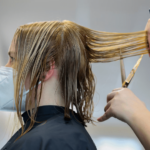
![Neutral Skin Tone Defined [and Best Colors for Neutral Skin] neutral skin tone](https://skincaregeeks.com/wp-content/uploads/2021/05/neutral-skin-tone-150x150.png)

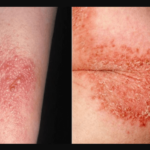
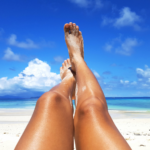
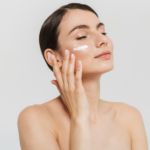

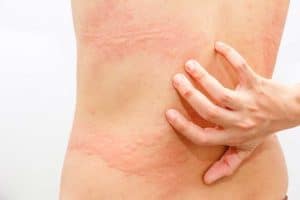
![Read more about the article How to Get Dead Skin Off Lips [6 Natural Remedies]](https://skincaregeeks.com/wp-content/uploads/2021/04/how-to-get-dead-skin-off-lips-300x200.jpg)